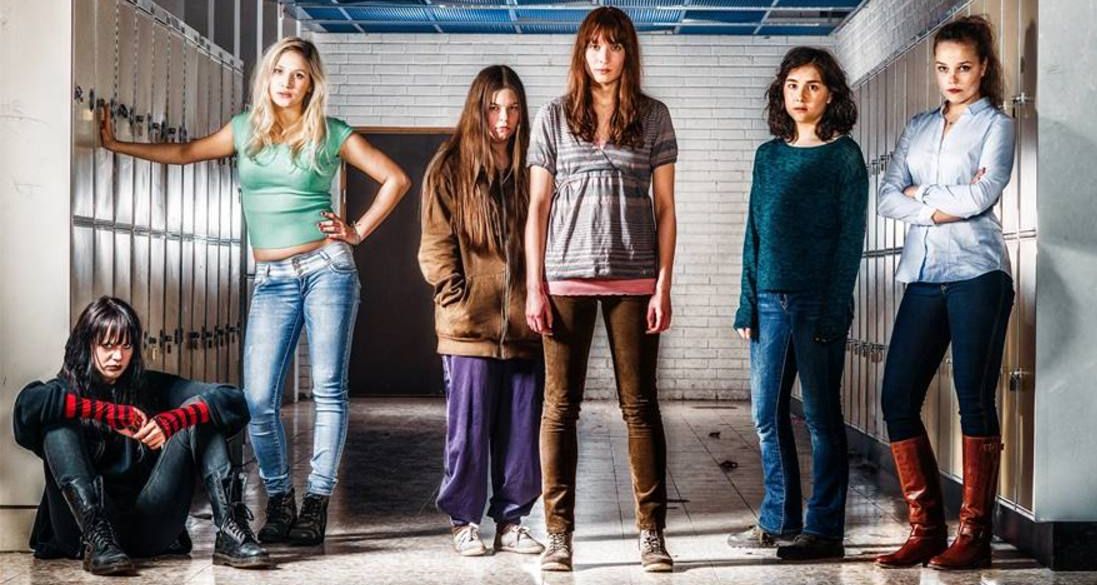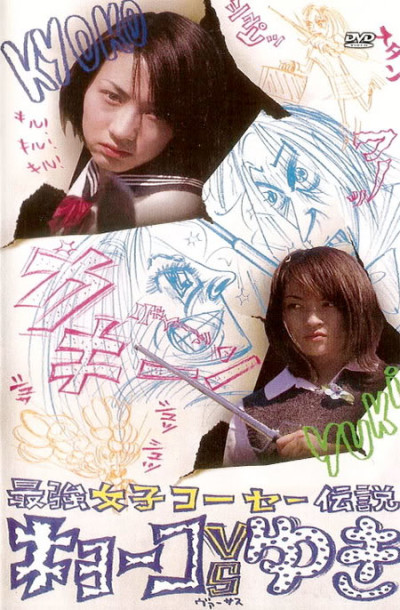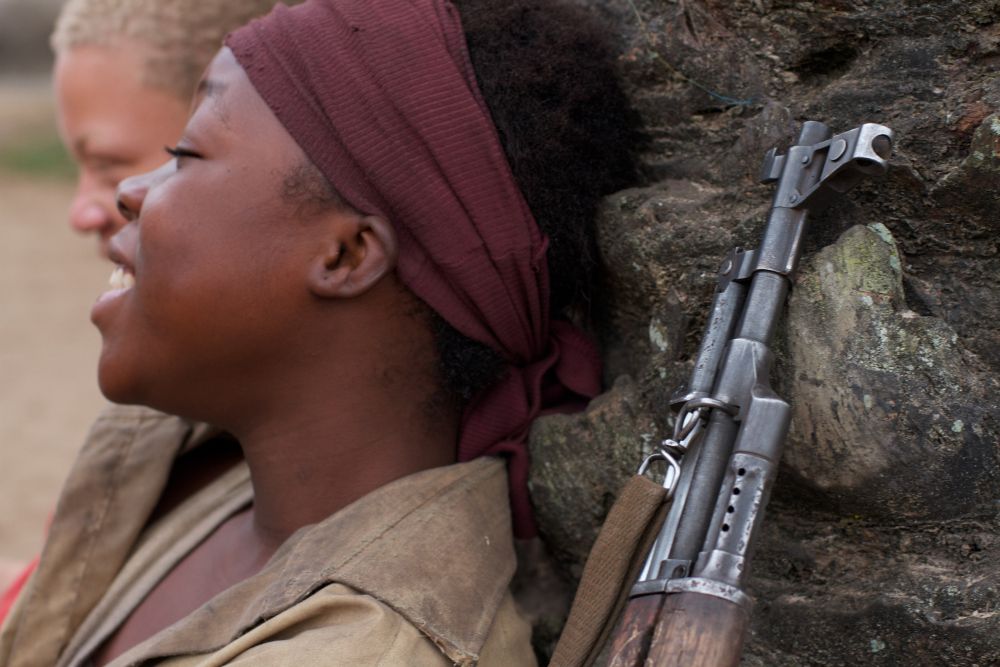★★★½
“Before you embark on a journey of revenge, dig two graves.”
 So Confucius (allegedly) said, and it appears the same is true in the Irish countryside – though I’m still not sure if the film’s title is a Bruce Springsteen reference. In this particular town, the sister of Cleo O’Callahan (Regan), turns up dead on the floor of a bar bathroom, her throat cut. Worse yet, Cleo and her BFF Robin (Willis) come across the bloody scene, after being alerted by the police activity. Who was responsible? Francis Macheath (Monaghan), the traveler to whom the sister owed money? Robin’s stalkery brother, Virgin (Gleeson), who had a bit of an unhealthy obsession with the dead girl? Or is the truth even more unpleasantly close to home? It matters, because Cleo has no confidence at all in the local cops’ ability to solve the class, and since she’s an Olympic-level shot, has the capacity to back up her bold statements of revenge. The question is, at what cost?
So Confucius (allegedly) said, and it appears the same is true in the Irish countryside – though I’m still not sure if the film’s title is a Bruce Springsteen reference. In this particular town, the sister of Cleo O’Callahan (Regan), turns up dead on the floor of a bar bathroom, her throat cut. Worse yet, Cleo and her BFF Robin (Willis) come across the bloody scene, after being alerted by the police activity. Who was responsible? Francis Macheath (Monaghan), the traveler to whom the sister owed money? Robin’s stalkery brother, Virgin (Gleeson), who had a bit of an unhealthy obsession with the dead girl? Or is the truth even more unpleasantly close to home? It matters, because Cleo has no confidence at all in the local cops’ ability to solve the class, and since she’s an Olympic-level shot, has the capacity to back up her bold statements of revenge. The question is, at what cost?
If Italian genre entries are known as “spaghetti Westerns”, does that make this a “potato Western”? Because there’s a lot here that seems to be borrowed by Ryan from the genre; while the landscapes may be a lot lusher than the Wild West, there’s no less lethal threats to be found, and Cleo’s taciturn shooter, out for vengeance, is only about a cheroot and some stubble from being Clint Eastwood. The film is actually not very concerned with revealing the killer – that particular aspect is answered very near the beginning, though I’m unsure if this could be a misstep, since it drains much potential suspense away. However, I get the feeling Ryan is much less concerned with “whodunnit” than why, as well as the question of how many more will end up falling victim to the resulting blood feud, and the toll it will eventually take on Cleo. Even though, there’s certainly a case to be made that Robin actually the more dangerous of the pair, thanks to her talent for manipulation.
There were elements that reminded me of Peter Jackson’s Heavenly Creatures, which drew a picture of a similar teenage relationship, whose very intensity helped lead to tragedy. The two Emmas, of necessity, are leaned upon to carry a great deal of the picture’s weight, and they are both very good in their roles, especially when, as during the 10 minutes which form the nearly-wordless opening sequence, they are forced to act. Ryan is perhaps too fond of these artistic flourishes, which tend to distract as much as they enhance, and you also need to exhibit some patience with the film, working with its rural rhythms, which are some way from the genre standards. However, the reward is certainly worth the effort, with the settings and characters providing a fresh new twist on a familiar formula.
Dir: Patrick Ryan
Star: Emma Eliza Regan, Emma Willis, Brian Gleeson, Sam Monaghan






 Unlike the adventures of our schoolboy wizard, where the final installment took the most at box-office, this was the least successful of the Hunger Games movies. And I can see why: almost without exception, it’s a relentless downer, rather than a grandstanding finale. I have not, to this point, read the book on which it is based, so can’t say how accurately this cynical tone reflects the novel, but based on the movie, let’s just say, politicians as a species do not come out of it with a glowing portrayal! It begins immediately after the end of the events of Part 1, when Katniss (Lawrence) was attacked by brainwashed ally Peeta (Hutcherson). Meanwhile, the rebellion gains momentum and territory, as they head towards the Capitol. Katniss’s role is now as a ‘Joan of Arc’, a rally point, and she is sent into the Capitol as part of a propaganda squad. However, she subverts the mission, claiming secret orders to assassinate President Snow, although it becomes clear that the lines between “good” rebels and “evil” establishment are increasingly vague.
Unlike the adventures of our schoolboy wizard, where the final installment took the most at box-office, this was the least successful of the Hunger Games movies. And I can see why: almost without exception, it’s a relentless downer, rather than a grandstanding finale. I have not, to this point, read the book on which it is based, so can’t say how accurately this cynical tone reflects the novel, but based on the movie, let’s just say, politicians as a species do not come out of it with a glowing portrayal! It begins immediately after the end of the events of Part 1, when Katniss (Lawrence) was attacked by brainwashed ally Peeta (Hutcherson). Meanwhile, the rebellion gains momentum and territory, as they head towards the Capitol. Katniss’s role is now as a ‘Joan of Arc’, a rally point, and she is sent into the Capitol as part of a propaganda squad. However, she subverts the mission, claiming secret orders to assassinate President Snow, although it becomes clear that the lines between “good” rebels and “evil” establishment are increasingly vague.


 There are occasionally times where our book reviewer Werner’s “split scale” of grades for both artistic merit and action, would come in handy. This is one of those times. For the action scenes here are as glorious as you would expect from the man behind Dead Fantasy, virtuoso symphonies of exquisite hyper-violence, meted out and absorbed by characters and monsters without fear or bias, in ways limited only – and not very much, at that – by the creator’s imagination. Probably inevitably, this overshadows a fairly perfunctory plot, and characters whose characterization is largely defined by the shade they wear. On a split scale, this would merit five stars for both the quantity and quality of action, but likely three or three and a half for artistic merit.
There are occasionally times where our book reviewer Werner’s “split scale” of grades for both artistic merit and action, would come in handy. This is one of those times. For the action scenes here are as glorious as you would expect from the man behind Dead Fantasy, virtuoso symphonies of exquisite hyper-violence, meted out and absorbed by characters and monsters without fear or bias, in ways limited only – and not very much, at that – by the creator’s imagination. Probably inevitably, this overshadows a fairly perfunctory plot, and characters whose characterization is largely defined by the shade they wear. On a split scale, this would merit five stars for both the quantity and quality of action, but likely three or three and a half for artistic merit.


